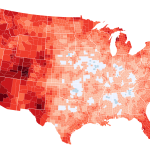The modern age of media has blurred the lines between audience and performer, fostering a phenomenon known as parasocial relationships. These one-sided connections, where an individual invests emotional energy into a media personality without reciprocal interaction, are increasingly prevalent. But what fuels this widespread illusion of intimacy, and why are we so susceptible to it?
The Allure of the One-Sided Bond
The rise of social media and readily accessible online personalities has created fertile ground for parasocial relationships. Podcasts, streaming services, and social media platforms offer constant access to the lives of influencers, celebrities, and even politicians. These platforms often present a curated, idealized version of reality, fostering a sense of connection through shared experiences, relatable anecdotes, and seemingly candid disclosures. Listeners feel a sense of intimacy through the frequent, intimate details shared, even if those details are carefully crafted for consumption. This “intimacy” is further amplified by the perceived accessibility of these figures; a simple comment on a social media post creates an illusion of engagement, reinforcing the one-sided relationship. The perceived transparency, however, often masks a carefully constructed public persona, leading to inevitable disappointment when the idealized image clashes with reality.
The Psychology of Connection
The psychological underpinnings of parasocial relationships are complex. For some, these connections might fulfill a need for social belonging, particularly for individuals who struggle with social anxiety or loneliness. The perceived connection offers a sense of community and shared identity, without the demands and vulnerabilities of real-world relationships. For others, it could be a form of escapism, providing a distraction from the stresses of daily life. The idealized image of the media personality becomes a source of comfort and inspiration.
Furthermore, our brains are wired to seek connection. The constant exposure to these personalities, coupled with the carefully crafted narratives, triggers the same neurological responses associated with genuine relationships. This can lead to strong emotional attachments, despite the inherent asymmetry of the interaction. The lack of reciprocal investment, however, can be jarring, leading to feelings of rejection or betrayal when the parasocial relationship is challenged.
Navigating the Digital Landscape
Understanding the nature of parasocial relationships is crucial in navigating the increasingly complex digital landscape. While these connections can offer a sense of community and entertainment, it’s essential to maintain a healthy level of awareness. Recognizing the curated nature of online personas is vital to avoid disappointment and maintain a balanced perspective. Cultivating genuine, reciprocal relationships remains crucial for emotional well-being, and understanding the difference between a parasocial connection and a true relationship is vital in maintaining a healthy perspective. The illusion of intimacy, while comforting, should not replace genuine human connection.
CONCLUSION:
Parasocial relationships are a product of our digitally connected world, highlighting the complex interplay between media consumption and psychological well-being. Recognizing the nature of these one-sided bonds and understanding their psychological underpinnings are crucial steps in navigating the complexities of modern media and maintaining a healthy sense of self. Maintaining a balance between online engagement and real-world connections is paramount to fostering genuine relationships and overall well-being.
Based on materials: Vox





